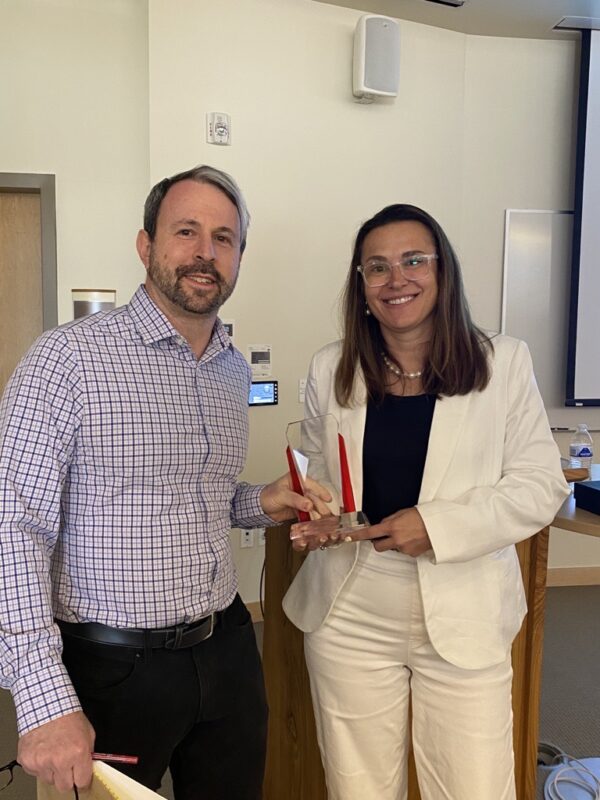Elizabeth N. Bess, Ph.D. – Finding Catalysts of Gut Reactions: The Gut Microbiota in Disease Onset and Treatment
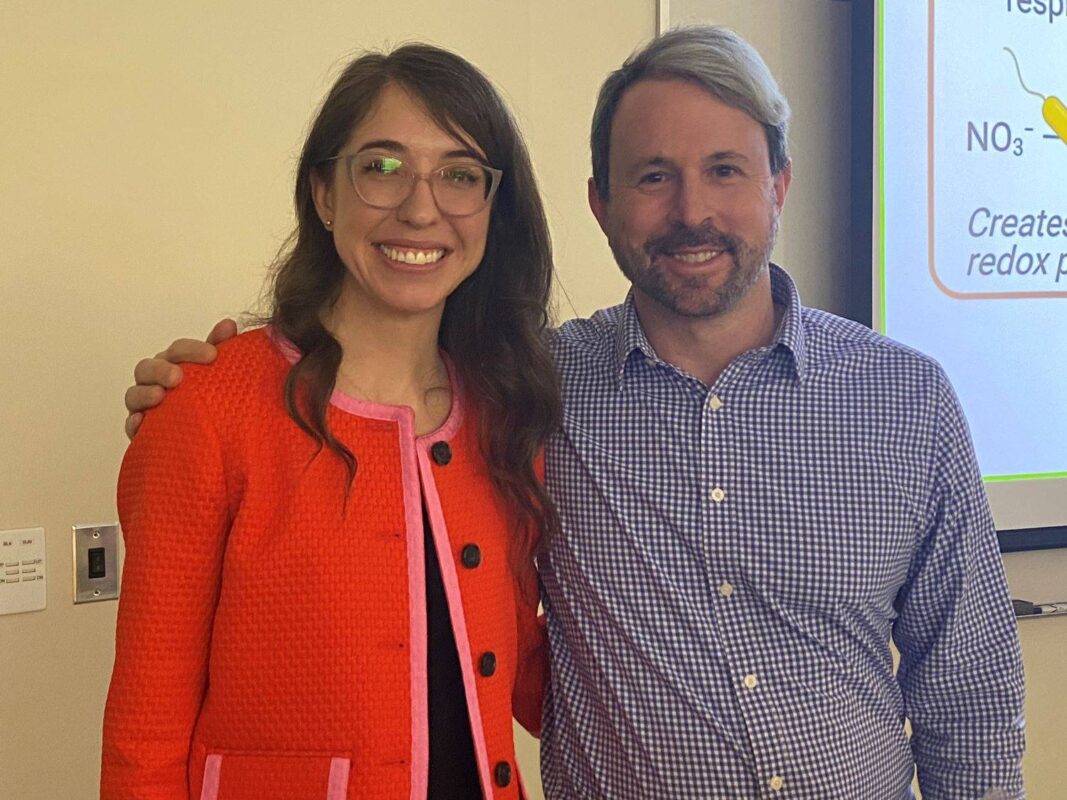
Bess is a Professor at the University of California, Irvine. She received her bachelor’s degree in 2009 and her Ph.D. in 2015, both from the University of Utah. While a Ph.D. student, Elizabeth Bess conducted her research in the Sigman Lab.
During her presentation on “Finding Catalysts of Gut Reactions: The Gut Microbiota in Disease Onset and Treatment,” she discussed Parkinson’s Disease.
Abstract: Parkinson’s disease (PD) etiology is associated with aggregation and accumulation of α-synuclein (α-syn) proteins in midbrain dopaminergic neurons. Emerging evidence suggests that in certain subtypes of PD, α-syn aggregates originate in the gut and subsequently spread to the brain. However, the mechanisms that instigate α-syn aggregation in the gut have remained elusive. In the brain, the aggregation of α-syn is induced by oxidized dopamine. Such a mechanism has not been explored in the gastrointestinal (GI) tract, a niche harboring 46% of the body’s dopamine reservoirs. The Bess Lab discovered that gut bacteria Enterobacteriaceae induce α-syn aggregation. More specifically, our in vitro data indicate that respiration of nitrate by Escherichia coli K-12 yields nitrite, a potent oxidizing agent that creates an oxidizing redox potential in the bacterial environment. In these conditions, Fe (II) was oxidized to Fe (III), enabling the formation of dopamine-derived quinones and α-syn aggregates. Exposing nitrite, but not nitrate, to enteroendocrine STC-1 cells induced aggregation of α-syn natively expressed in these cells, which line the intestinal tract. Examining the in vivo relevance of bacterial nitrate respiration to the formation of α-syn aggregates using Caenorhabditis elegans models of PD, we discovered that nematodes exposed to nitrate-reducing E. coli K-12 displayed significantly enhanced neurodegeneration as compared to an E. coli K-12 mutant that could not respire nitrate. This neurodegenerative effect was absent when α-syn was mutated to prevent interactions with dopamine-derived quinones. Taken together, our findings indicate that gut bacterial nitrate reduction may be critical to initiating intestinal α-syn aggregation. (Picture: Elizabeth Bess and Matthew Sigman, May 2023)
Agnes Szarzec-Larsen, M.S. –Safety Practices in Industry
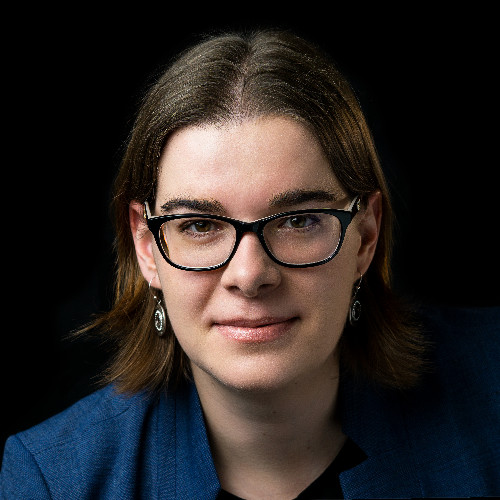
The 2nd annual College of Science Safety Day brings faculty, staff, and experts together to offer training and updates on laboratory, classroom, and workplace safety.
Agnes Szarzec-Larsen is a Deployed Environment, Safety, and Health Coordinator for the Material Science Division and the Quantum Foundry at Argonne National Laboratory. Her past work titles include Hazard Analyst with the Office of Emergency Management at Argonne National Laboratory and Senior Laboratory Specialist in the Department of Chemistry at the University of Utah. During her more than ten years of experience, Agnes developed valuable skills in implementing work planning and control processes, including evaluation of work activities, identification of hazards, and controls to mitigate risks and exposures. She has extensive laboratory and chemical safety knowledge with specific applications of ESH requirements and standards. She graduated with a Bachelor of Science and a Master of Science in chemistry from the University of Utah.
During Safety Day, Agnes was one of the panelists who discussed “Safety beyond the U: Sharing Insights into Safety Practices in Industry.” Also, Agnes organized one of the sessions called “A Glimpse into Working at a National Lab and Why You Should Consider a Career in Safety.”
Tom Tague, Ph.D. – Infrared Microscopy
Thomas Tague is the Applications Manager for Bruker Optics. During his seminar, ton discussed the improvements in Raman and infrared instrumentation over the last several years that have facilitated the application of infrared and Raman spectroscopy to life science investigations.
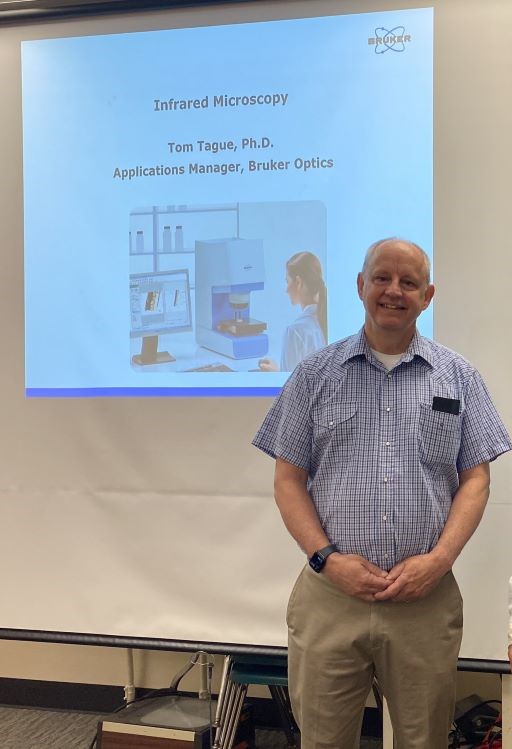 |
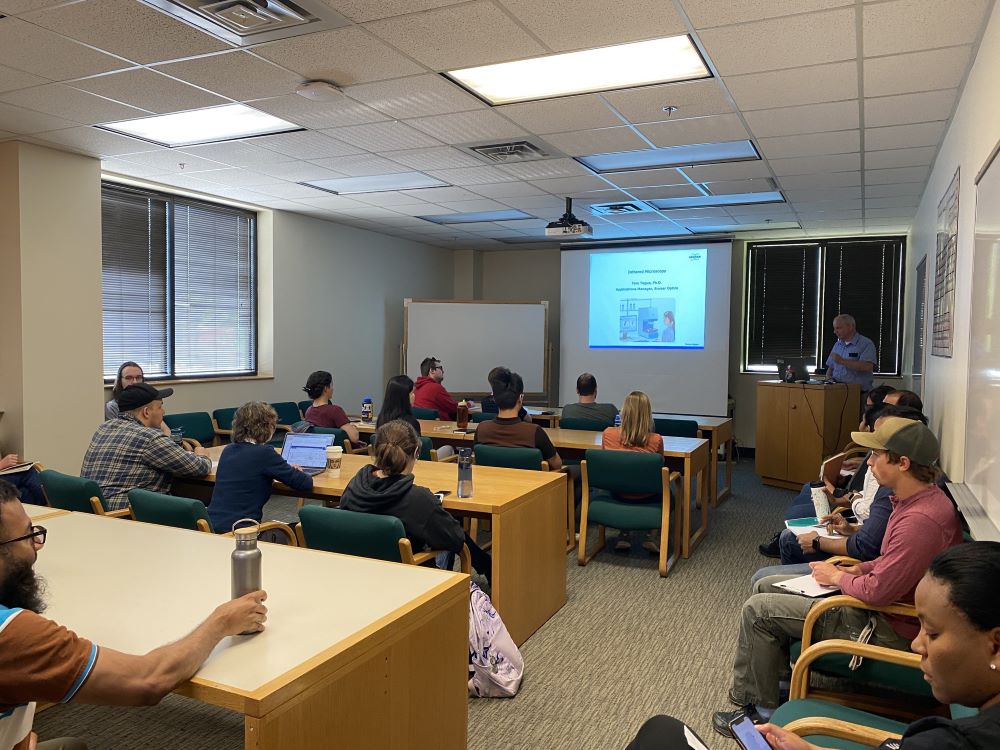 |
Tom Tague is also a member of the Visiting Scientists Committee of the Metropolitan Museum of Art in New York and the Board of Corporators at the Worcester Art Museum. Dr. Tague received his Ph.D. from the University of Utah in Chemistry and his B.S. also in Chemistry from the University of Texas at San Antonio. He is a member of the American Chemical Society, American Physical Society, and the Optical Society of America. Dr. Tague’s interest lies in applying advanced molecular spectroscopy techniques to identify and treat cancers. He has collaborated with several academic institutions, most recently with the Capasso Group of the Harvard Applied Physics Department. This work yielded new insights into the use of Quantum Cascade Lasers in molecular spectroscopy and new methods for disease detection using SERSS spectroscopy. Dr. Tague has also participated in the New York Task Force on Industry-Higher Education Partnerships and is a member of the National Science Foundation Committee, “Chemistry and Materials Research at the Interface between Science and Art.” Tom has more than 60 publications and 5 Patents.
Carrie Wager, Ph.D. – Building Ascidian Therapeutics, A New Way to Treat Patients
Wager is a University of Utah Ph.D. alumni who received her degree in 2000 and won the 2020 Distinguished Alumni Award. While she was a student, Wager researched with the Keck Research Group.
Carrie Wager visited the Chemistry Department in May 2023 and presented her work to the chemistry students. During her presentation on “Building Ascidian Therapeutics, A New Way to Treat Patients,” she discussed Exon editing: “a promising strategy for correcting disease-causing mutations by inducing trans-splicing between a therapeutic RNA Exon Editor molecule and an endogenous mutated pre-mRNA target, forming repaired mRNA and wild-type protein.”
She then described the process in which Ascidians exon editing is developing and our path to the clinic.
Carrie received her bachelor’s in chemistry in 1994 from Miami University, her Ph.D. in Chemistry from the University of Utah in 2000, and an MBA from the MIT Sloan School of Management in 2017. Carrie spent 17 years at Pfizer as Senior Principal Scientist, Director of Business Planning, Chief of Staff for Pfizer Medical, and Medical Strategy Lead in Oncology. She then joined the Broad Institute of MIT and Harvard as Senior Advisor before assuming her position at Ascidian Therapeutics. (Picture: Carrie Wager and Matthew Sigman, May 2023)

